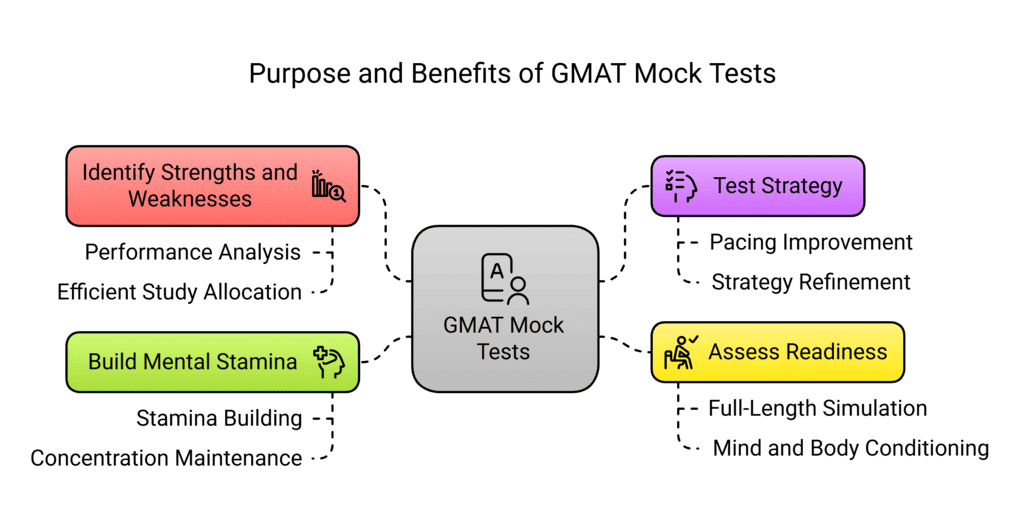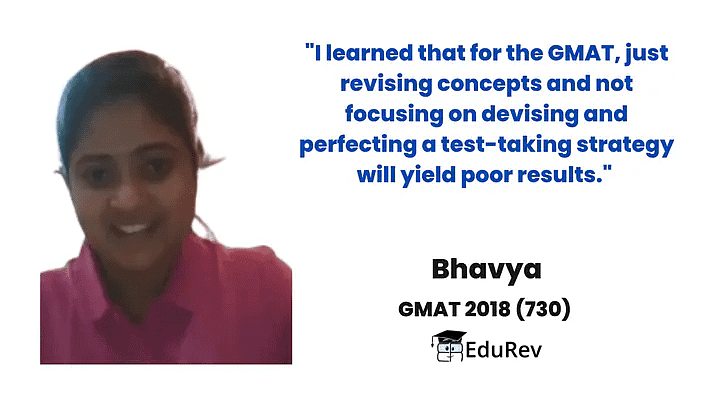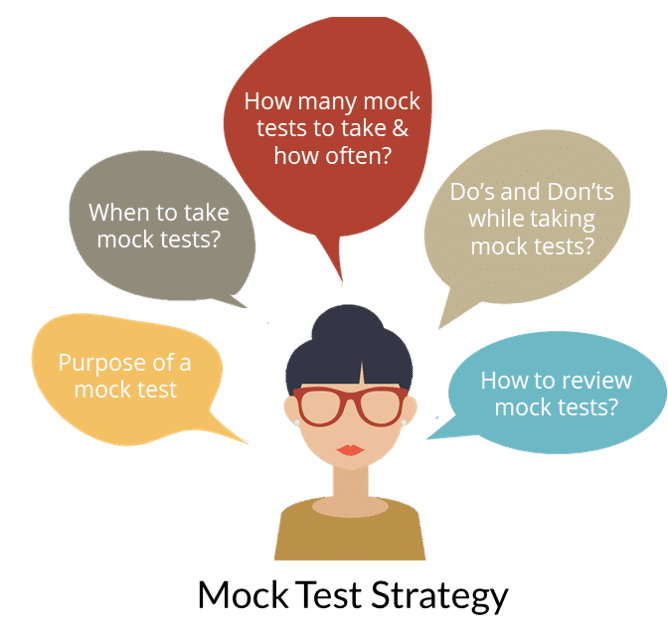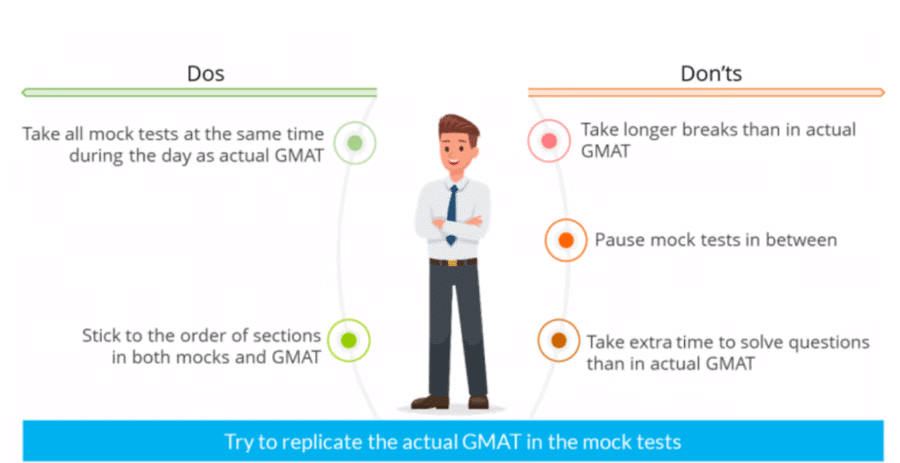How to Attempt Mock Tests | How to prepare for GMAT PDF Download
| Table of contents |

|
| Purpose of GMAT Mock Tests: Why They Matter |

|
| Practice Questions vs. Sectional Tests vs. Full-Length Mocks |

|
| Essential Guidelines While Taking GMAT Mocks |

|
| Do’s and Don’ts for GMAT Mocks |

|
Purpose of GMAT Mock Tests: Why They Matter
Mock tests are a critical part of your GMAT preparation journey. They serve multiple purposes and should be used strategically based on your current stage of preparation. Below are the four key functions of GMAT mock exams:

1. Identify Strengths and Weaknesses
Mock tests provide a clear diagnostic of your performance. They help pinpoint the areas where you're strong and highlight topics where improvement is needed. This allows you to allocate your study time more efficiently and focus on high-impact areas.
2. Test Your Strategy, Not Just Knowledge
Even if you know all the concepts, you might underperform due to poor pacing, misinterpretation of question types, or inefficient test strategies. Mock tests expose these gaps and help refine your overall test-taking approach.
3. Assess Your GMAT Readiness
Taking full-length mocks simulates the real exam experience and helps evaluate how prepared you truly are. It also conditions your mind and body to sustain focus and performance over a three-hour-plus testing window.
4. Build Mental Stamina and Focus
Sitting through a full-length GMAT exam is mentally demanding. Regularly taking mock exams builds the stamina and concentration needed to maintain performance across all sections—something that casual practice can't replicate.

How many GMAT mocks should you take and how often?
Initial Mock: Take one diagnostic test at the beginning of your prep to set a baseline.
During Prep: Space out mock exams as checkpoints to measure progress.
Final Phase: Aim for at least 2 full-length mock tests in the last 2–3 weeks leading up to your GMAT.
Optional: Take additional mocks if time allows and you're refining specific strategies.

Practice Questions vs. Sectional Tests vs. Full-Length Mocks
- During the learning phase, which includes conceptual learning, practice questions are required.
- Practice questions serve as a jumping-off point for you to begin using the concepts and procedures you learn on real-world problems. Your conceptual and procedural learning is reinforced with practice questions. Inadequate learning is also revealed by them.
- You can monitor and improve your study before taking the following fake test by using section tests in between mock tests.
- Making the most of your time and financial investment in the practice exam will also be facilitated by doing this.
- You must make sure that the sectional tests, and preferably even the mock tests, that you take, can provide you with topic-level data of your performance.

Essential Guidelines While Taking GMAT Mocks
✅ Take Full-Length Tests – No Skipping
Do not skip any sections (AWA or IR), even if you're not fully prepared. Each section contributes to your test stamina and overall readiness. Skipping distorts your score estimate and undermines the test experience.
✅ Stick to the Official Time Limits
Simulate real test conditions strictly—use the official time limits and break durations. Avoid giving yourself extra time, pausing the test, or taking unscheduled breaks.
✅ Treat Mocks Like the Real GMAT
Approach your mocks with full seriousness. Eliminate distractions, sit in a quiet environment, and use only the resources allowed during the actual test. Build the discipline required for exam day.
✅ Aim for Consistency, Not One-Off Scores
A single high score is not a reliable predictor. But if you're consistently scoring around your target score across multiple mocks, it's a strong sign you're ready for the real thing.
Do’s and Don’ts for GMAT Mocks

Do’s for GMAT Mock Tests
Take full-length mocks at regular intervals to track your progress.
Include all sections in the mock test (AWA, IR, Quant, Verbal).
Simulate real test conditions — timed, quiet environment, no interruptions.
Stick to the official timing, including breaks.
Review each mock test thoroughly — analyse mistakes and patterns.
Use the score reports to identify weak areas and revise accordingly.
Take sectional tests in between mocks to strengthen specific sections.
Focus on building stamina and concentration with each mock.
Aim for consistent scores across multiple mock exams.
Use topic-level performance data to fine-tune your study plan.
Don’ts for GMAT Mock Tests
Don’t skip sections thinking you’ll attempt them later.
Don’t pause or give yourself extra time during the test.
Don’t use calculators or notes if they’re not allowed in the actual exam.
Don’t ignore performance analytics after completing the test.
Don’t take multiple mocks back-to-back without reviewing them.
Don’t panic over one bad score — look at overall trends.
Don’t change your strategy too often based on a single mock test.
Don’t underestimate the importance of mental endurance.
Don’t treat mocks casually — take them as seriously as the real exam.
|
2 videos|14 docs
|
FAQs on How to Attempt Mock Tests - How to prepare for GMAT
| 1. How many GMAT mocks should I take and how often? |  |
| 2. What is the difference between Practice Questions, Sectional Tests, and Full-Length Mock Tests? |  |
| 3. Should I leave out sections while giving Mocks? |  |
| 4. What are the do's and don'ts for attempting Mock Tests? |  |
| 5. How should I attempt GMAT Mock Tests? |  |
















